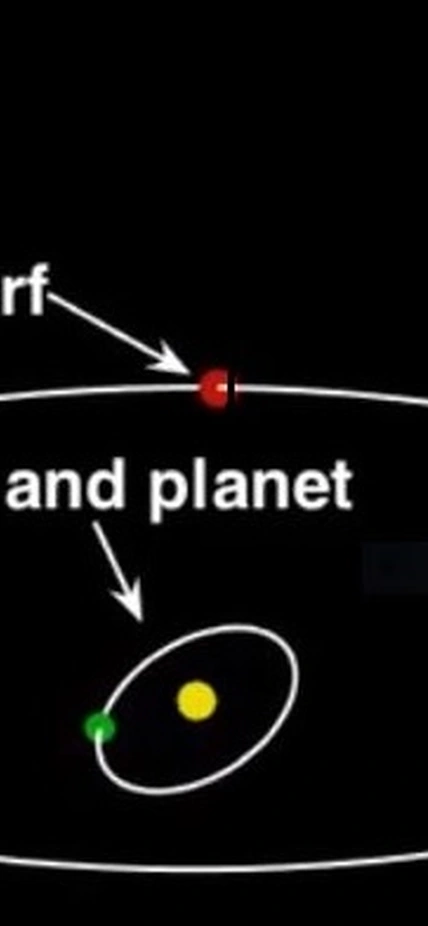Washington, DC— A team made up almost entirely of current and former Carnegie scientists has discovered a highly unusual planetary system comprised of a Sun-like star, a dwarf star, and an enormous planet sandwiched in between.
The planet, first discovered in 2011 orbiting a star called HD 7449, is about eight times the mass of Jupiter and has one of the most eccentric orbits ever found. An eccentric orbit is one that deviates from being perfectly circular. The further from a circle it is, the more eccentric it is. A large eccentricity can also indicate that a planet is being affected by other objects nearby. For the planet around HD 7449, the large eccentricity was a clue that something else—something bigger than the known planet—also resided in the system.
“The question was: is it a planet or a dwarf star?” said lead author Timothy Rodigas. To answer the question, Rodigas and his team used the Magellan adaptive optics (MagAO) instrument suite to directly image the mysterious object. MagAO, commissioned in 2013, enables astronomers to take extremely high-resolution images, giving them a sharper look at the night sky than ever before.
“At the telescope, we saw the object within seconds, and that told us it had to be a dwarf star,” Rodigas added.
Just another boring star, right? No, this one is tiny, only 20 percent of the mass of the Sun, and its orbit places it close to the primary star, HD 7449A, just 18 astronomical units (AU) away. (1 AU is the distance from the Earth to the Sun.) For comparison, Neptune orbits the Sun at 30 AU.
Not long ago, binaries (two co-orbiting stars) were thought incapable of hosting planets, but over the past few years the number of circumbinary planets detected has been steadily growing. This system, though, is one of only a handful consisting of a Sun-like star, a dwarf star, and a gas giant planet in between—all within 20 AU. What’s more, among these, the planet HD 7449Ab is by far the most massive and has the most eccentric orbit.
The authors believe that the dwarf star and the planet have been gravitationally influencing each other for millions of years. Specifically, the planet’s eccentricity and orbital inclination, meaning its angle relative to the equatorial plane of the primary star, have been oscillating back and forth in a process known as Kozai oscillations—and will continue to do so for the foreseeable future.
“It’s difficult to visualize what happens to the planet over time, but you could say that it’s ‘dancing’ between the two stars,” Rodigas said.
The team will continue to monitor the system over the coming years using both the radial velocity technique (which measures how stars wobble when planets orbit them), and direct imaging. They hope to determine how such a strange system could have formed.
Their findings are published in The Astrophysical Journal.
Other members of the team include a large number of current and former Carnegie postdocs and staff: Pamela Arriagada, Jackie Faherty, Guillen Anglada-Escudé (now at University of London), Nathan Kaib (now at University of Oklahoma), Paul Butler, Stephen Shectman, Alycia Weinberger, Jeffrey Crane, Ian Thompson, Johanna Teske, Matías Díaz (now at Universidad de Chile), Mercedes Lopez-Morales (now at Harvard University), and Alan Boss.
Planetary system video coutesy of Timothy Rodigas.
__________________
This work was supported by a NASA Hubble Fellowship from the Space Telescope Science Institute, which is operated by the Association of Universities for Research in Astronomy, Inc., under a NASA contract; the BASAL CATA Center for Astrophysics and Associated Technologies; the Ministry for the Economy, Development, and Tourism’s Programa Iniciativa Cientfica Milenio, awarded to the Millennium Institute of Astrophysics; and FONDECYT.
MagAO was developed at the University of Arizona with support by the NSF.
